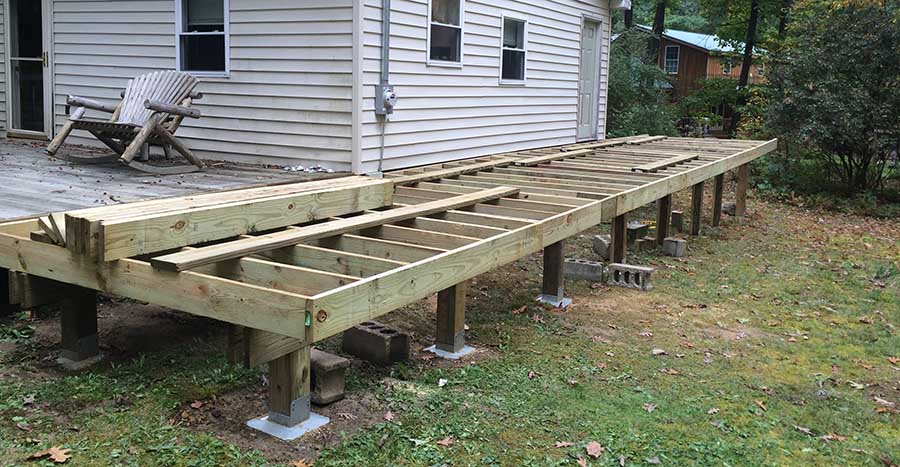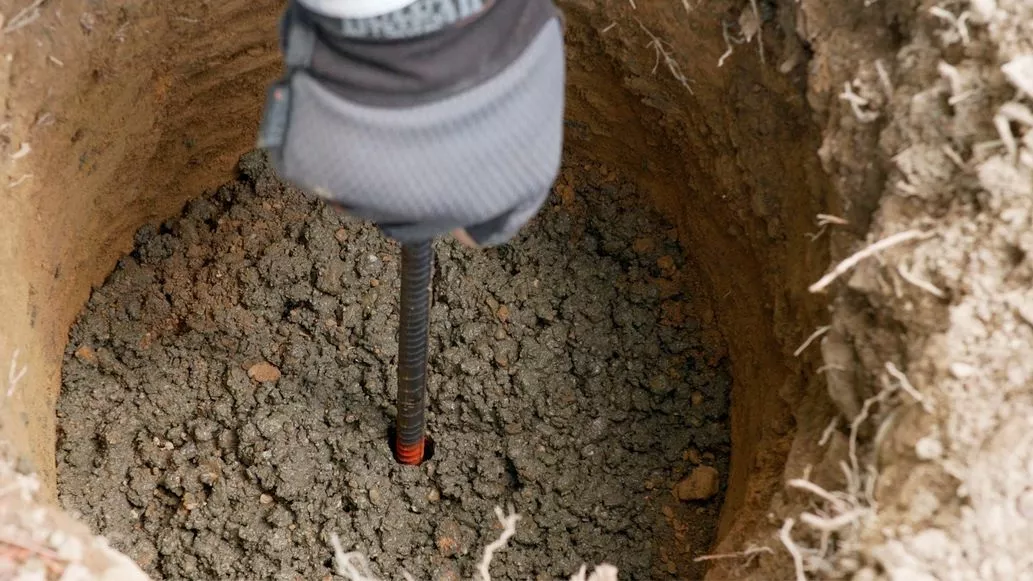A Strong Foundation for Your Sanctuary: Discovering the Significance of Deck Footings in Outdoor Frameworks
Wiki Article
Picking the Right Deck Footings for Security and Resilience
The longevity and security of your deck depend greatly on the type of footings you select, as they supply the vital support and stability to stand up to the test of time. In this conversation, we will check out the various kinds of deck grounds, consider the crucial variables to weigh when making a decision, and dig right into the pros and disadvantages of various options.Types of Deck Grounds
These footings consist of a cylindrical hole filled with concrete, which provides a solid structure for the deck messages. Concrete pier grounds are reasonably very easy to install and provide exceptional security, making them a prominent selection for several deck tasks.Another sort of ground is the helical heap ground. Helical stacks are steel shafts with helical plates affixed to them. These grounds are mounted by screwing them right into the ground, which produces a safe and secure structure for the deck. Helical heap grounds are suitable for locations with tough dirt problems, as they can be set up in nearly any type of type of soil. If needed., they also allow for simple adjustment and progressing of the deck.
Alternatively, some builders select precast concrete footings. These grounds are made from durable concrete and can be found in different forms and sizes to suit various deck designs. Precast concrete grounds are practical to mount and give a steady base for the deck framework.
Lastly, another choice is the post-in-anchor footing system. This kind of footing includes driving a metal support into the ground and connecting it to the deck post. It uses versatility in terms of placing the deck articles and appropriates for decks with lightweight frameworks.
When selecting the right kind of deck ground, it is vital to take into consideration aspects such as dirt conditions, deck lots, and regional building regulations (Deck Footings). Consulting with a professional specialist or architectural engineer can help guarantee the appropriate ground is chosen for a steady and safe deck
Aspects to Consider When Picking Footings
When picking the appropriate grounds for a deck, it is important to carefully take into consideration various aspects such as soil conditions, deck lots, and adherence to neighborhood building regulations. These aspects play a substantial role in making sure the security and sturdiness of the deck framework.Among the primary elements to think about is the soil conditions. The type of soil on which the deck will certainly be developed determines the kind of grounds needed. Decks developed on sandy or loose soils may call for much deeper grounds to provide adequate assistance and protect against settling. On the various other hand, decks constructed on clay or large dirts might call for grounds that can suit the dirt's propensity to broaden and contract.
One more crucial aspect is the deck load. The weight of the deck, consisting of the products utilized and any potential live loads such as furnishings or events, should be taken into account when selecting grounds. The grounds need to be created to bear the weight of the deck and distribute it equally to avoid any kind of architectural issues or failures.
Last but not least, adherence to regional building ordinance is critical. Building ordinance differ from region to area, and it is vital to comply with the specific demands set by the regional authorities. Deck Footings. These codes make certain that the deck is built safely and fulfills the needed criteria for structural integrity and load-bearing capability
Concrete Footings: Disadvantages and pros

Concrete grounds offer a number of benefits and downsides when made use of as the structure for a deck. On the favorable side, concrete grounds give outstanding stability and sturdiness.
One more benefit of concrete footings is their adaptability. They can be put right into different sizes and shapes to fit different deck styles and arrangements. Concrete footings can be customized to fit the particular demands and requirements of the deck framework.
However, there are also some drawbacks to using concrete footings. One major disadvantage is the cost and labor entailed in their installation. Concrete footings need excavation and commonly require the support of heavy equipment. This can boost the Look At This general cost of the deck project and might need professional aid.

Helical Piers Vs. Sonotubes: Which Is Better?
In taking into consideration the structure choices for a deck, the comparison between helical piers and sonotubes is important in figuring out the remarkable option. They are turned right into the ground utilizing hydraulic equipment, supplying a resilient and secure structure for the deck.The helical plates on the piers produce a strong grip with the dirt, shifting or protecting against any kind of motion of the deck. Sonotubes, on the various other hand, depend only on the concrete filling up for security, which may not supply the exact same degree of stamina and resistance.
In regards to installation, helical piers are reasonably less complicated and faster to set up compared to sonotubes. The hydraulic equipment used to twist the piers right into the ground makes certain a quick and efficient process. Sonotubes, on the various other hand, need excavating openings and putting concrete, which can be time-consuming and labor-intensive.
Additionally, helical piers are a more functional alternative. They can be utilized in numerous dirt problems and can be changed or enhanced if needed. Sonotubes, on the other hand, may call for additional support, such as rebar, in specific dirt problems or areas with high tons requirements.
Selecting the Right Footings for Your Deck's Measurements
For optimum structural integrity, it is necessary to meticulously select the appropriate grounds that straighten with the measurements of your deck. The measurements of your deck, including its width, length, and height, play a significant function in determining the type and size of footings called for.When picking footings for your deck, it is necessary to take into consideration the load-bearing capacity of the dirt. The weight of the deck, incorporated with the weight of any furnishings or individuals on it, exerts a significant force on the footings (Deck Footings). Therefore, it is important to pick grounds that can sufficiently sustain this weight without sinking or changing in time.
The dimension and shape of the footings need to also be taken into consideration. Bigger look at here now decks with higher dimensions need larger footings to provide sufficient stability and support. The form of the grounds, whether they are square or round, depends upon the layout and format of the deck. Additionally, the deepness at which the footings are mounted should be figured out based upon the frost line in your region to avoid any heaving or moving due to freezing temperature levels.
Conclusion
In final thought, choosing the appropriate deck footings is essential for guaranteeing security and toughness. Elements such as the kind of footings, the deck's measurements, and the pros and cons of various choices should be taken into consideration.These grounds consist of a round opening visit this site loaded with concrete, which provides a solid structure for the deck posts. Concrete pier footings are reasonably simple to install and use exceptional security, making them a prominent choice for many deck jobs.
Precast concrete grounds are practical to install and supply a stable base for the deck framework.
It offers versatility in terms of placing the deck posts and is appropriate for decks with light-weight frameworks.
Concrete grounds provide a number of advantages and drawbacks when made use of as the foundation for a deck.
Report this wiki page